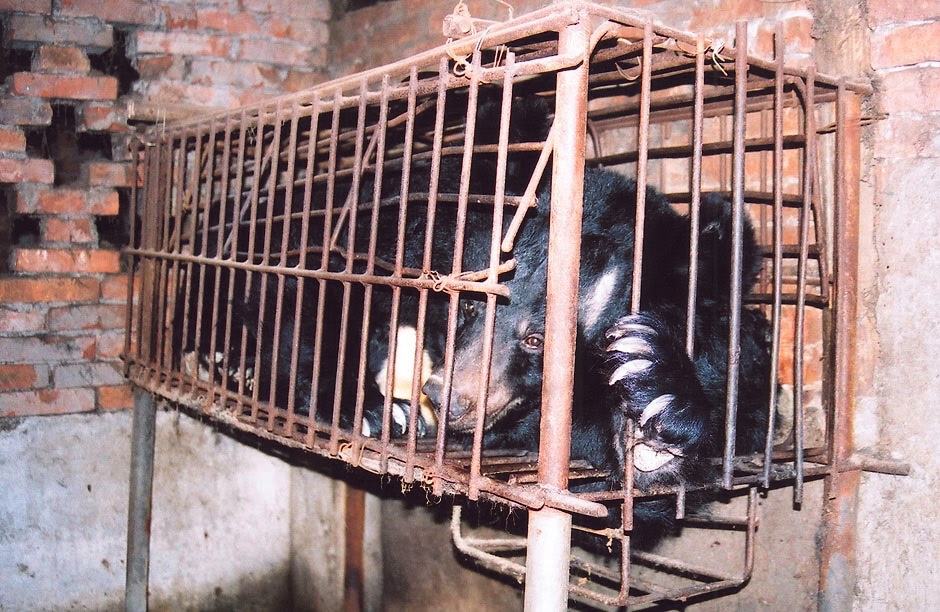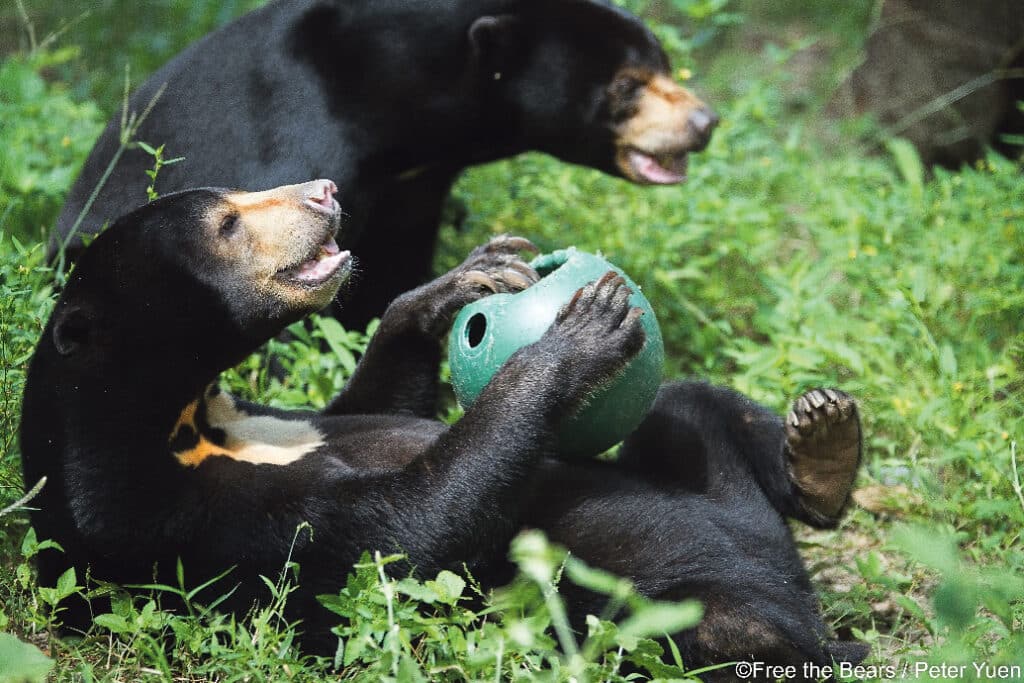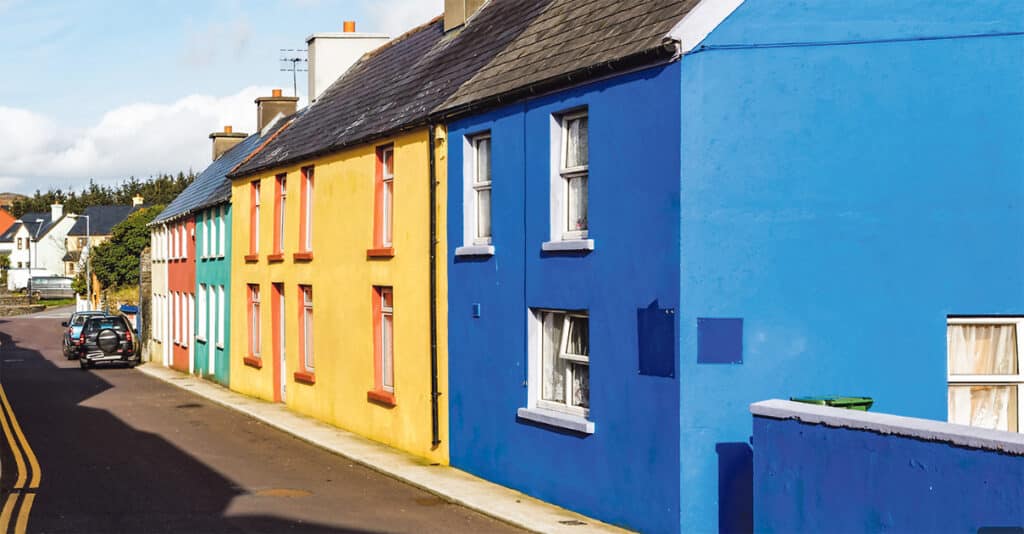

One of the highlights of any trip to China is the Great Wall. To enjoy it, you must see those sections far away from Beijing, where there will be fewer tourists and less commercialism. Unfortunately, when I first lived in China, nearly twenty years ago, my visit to the Great Wall was part of a school outing, and we had just a couple of hours at Badaling, the nearest part to China’s monstrous capital.
It was August, so the place was teeming with tourists who, along with the stalls of cheap souvenirs, the screaming children on the mini-railway and the sad-looking camel giving rides, all detracted from the magnificence of the architecture and history. But much worse were the bear pits. Thirty-five Asiatic black bears were confined in three sunken concrete enclosures, with just a few metal bars for decoration. The poor things paced around and around in the heat, desperately unhappy, presumably to entertain the thousands of moronic tourists who laughed as they threw them cigarettes, sweets and the remains of corn cobs. That will forever be my memory of the Great Wall of China.
There are eight species of bears living today. The polar bear in the Arctic, the spectacled bear from South America, and the sloth bear, sun bear and Asiatic black bear, are all vulnerable because of habitat loss due to climate change or human population expansion. There are still plenty of brown bears and American black bears, although they are hunted and tormented. The giant panda is endangered in the wild, but being a national symbol, and valuable diplomatically (China likes to lend pandas to favoured countries), hundreds of them live in luxurious captivity.
There used to be brown bears in Ireland until about 3,000 years ago, but Neolithic Man exterminated them all. He also got rid of the lynx, the wolf and the wild boar, leaving few large animals species for Modern Man to destroy (though he is making life difficult or impossible for many of our smaller creatures with, for example, the relentless mowing, strimming and hedge trimming that now blight almost every fine day).
Bears have long been part of our lives, in literature and folklore – who has not had a teddy bear or read the stories of Rupert, Pooh or Paddington Bear? The Greek word for bear is “arktos”, from where we get “Arctic”; (logically, the Antarctic is where there are no bears). Yet although they are much loved, bears have been, and still are, treated horribly by mankind.
For centuries, bear baiting was a popular spectator sport. People actually enjoyed watching a brown bear, chained and unable to defend itself properly, being attacked by several bulldogs. This abomination was banned in Britain in 1835, but even in this century bear baiting goes on, in Pakistan and, until 2013, in South Carolina, USA.
Then there are the dancing bears. They were a common sight in circuses and on the streets of many countries from the Middle Ages to the 19th century. Brown bears were being forced to perform in eastern Europe, particularly in Bulgaria, until 2007; sloth bears were still dancing in India until 2009.
To make a bear dance, it was taken as a cub from its mother, who was probably shot. It was placed on a hot metal plate while its owner played music. The hot plate made the cub stand on its hind legs and jump around in pain, and after enough time, the bear would associate the music with the hot plate and keep dancing. When it was bigger, the bear would be fitted with an iron muzzle and chained, by rings through nose and upper lip, to its master. Often it was given alcohol.
But there is worse – the use of bear parts, especially bile, in Chinese medicine.
In China, if you suffer from asthma, instead of going to your GP for an inhaler, you might ask a pharmacist for dried flying-lizard membrane. If your child is wetting the bed, then pulverised sea horse would be just the thing. Sexual inadequacy is supposedly sorted out by tiger bone soup or powdered rhinoceros horn. And for those suffering from haemorrhoids, epilepsy, gallstones, alcoholism and many other totally unrelated afflictions, there is bear bile.
A lot of plants used in Chinese medicine have genuine pharmaceutical value. Sweet wormwood (Artemisia annua) for example, was known from ancient texts to be effective in the treatment of malaria, a discovery that earned Tu Youyou a share in the 2015 Nobel Prize for Physiology or Medicine (it possibly saved my life on two occasions). But many aspects of Chinese medicine are complete humbug, and result in unspeakable cruelty; several animal species, most notably rhinos and pangolins, are being hunted to extinction because of it. But the ones that suffer the most are bears.
In China and several SE Asian countries, Asiatic black bears and sun bears are kept in bile farms, which are often just sheds in people’s backyards, in cages so small the bears can hardly move. Such a bear will have a tube, fitted without anaesthetic by criminals, not veterinarians, inserted permanently into its gall bladder, from which the bile is extracted. The process is invariably unhygienic, so the bears suffer from infections and diseases which ultimately kill them. Until then, these intelligent animals are starved, dehydrated and in pain – for their entire lives, perhaps twenty years, they know nothing but continuous misery.
The bile is sold to pharmacies or companies that make it into various tonics, even throat lozenges, shampoo and tea. I once bought a bottle of spirits in a supermarket, only because the shape of the bottle and colour of the label were attractive. It was terribly bitter and I could hardly drink it, so I asked a Chinese friend what it was – bear bile alcohol. I poured it down the loo immediately.
When the captive bears no longer produce enough bile, they are killed and their body parts sold. Their feet are cut off to make bear paw soup. Often, the bears’ feet are removed when the animal is still alive, in front of the diner, which adds to the gastronomic experience. The front paws are the most expensive as they are said to be the tenderest.
And that is not the end. The bear is then beaten nearly to death – adrenaline tenderises the rest of the bear meat (this is done to dogs too) – before being boiled alive.
A bowl of bear paw soup can cost $1,000, and bestows on the diner the strength and virility of a bear, though obviously not its intelligence.
Bear farming was started in China, supposedly to protect wild bears, which were being wiped out for the bile trade. But many consider wild bile better; most of the caged bears came from the wild anyway, and increased availability of bile because of the farming led to a larger market, and so still more hunting. It is now a huge worldwide industry, worth hundreds of millions of dollars.
In the 1990s, the Chinese government made various attempts to regulate and improve the bile extraction industry, but that led to more bear farms starting up in poor countries, especially Laos and Vietnam, where governments cared even less about wildlife.
Thankfully, there are many organisations trying to save bears. When I lived in Cambodia, I met some volunteers from Free The Bears, a small Australian charity. They helped when my students were doing a project about bear bile farming, and I visited their sanctuary outside Phnom Penh. Some of the bears rescued had limbs missing – because of snares or soup.
Free The Bears was started in 1993 when Mary Hutton, a grandmother from Perth, saw a documentary on TV about bear bile farming. Since then, her organisation has saved over 1,000 bears – last month, they rescued 18 cubs from a major wildlife trafficker in Laos.
Thanks to organisations like Free The Bears, Vietnam, Cambodia and Laos now prohibit taking bears from the wild or extracting bile. But around 200 bears remain in illegal captivity in Vietnam, and an estimated 10,000 are still suffering in bile farms in China.
If you are interested, or would like to help, look at the Free The Bears website (freethebears.org). Also, I recommend watching the BBC video about dancing bears in Bulgaria. Then reflect on the wise words of Gandhi: “The greatness of a nation, and its moral progress, can be judged by the way its animals are treated.”



